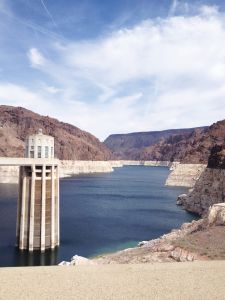
California governor Jerry Brown signed off on an emergency drought relief package and imposed new statewide regulations on residents, businesses, and farms through an executive order on Wednesday, April 1.
This package provides more than $1 billion in funds and mandates state water officials to cut down water consumption by 25 percent. These restrictions will be enacted on cities and local agencies, and funds will go towards providing clean drinking water and food assistance for rural and farming communities.
California State Water Resources Board (SWRB) draft regulations are expected to last for 270 days, and the plan is for them to be approved in mid April or early May.
These new regulations, set under bills AB 91 and AB 92, will provide $135 million in funding for emergency drinking water.
These funds will be especially helpful for cities in the Central Valley.
Compared to 2013, people used about 21 percent less water in November and about 25 percent less in December of 2014.
These regulations may drastically change the way Californians manage their water. A study conducted by the Association of California Water Agencies stated that more than 90 percent of Californians are willing to make significant changes to conserve water.
The new drought regulations also include an allocation of $24 million for food to agricultural areas and farms who have suffered massive unemployment. Funds will be allocated to local and regional food banks and will provide assistance to farming communities.
Brown’s mandate will require significant water cuts on golf courses, cemeteries, and other large green landscapes; replace 50 million square feet of lawns with “drought-friendly” landscaping; prohibit homes from irrigating potable water without a drip irrigation system; prohibit the watering of ornamental grass on public property; and hold agricultural water users more accountable for their water consumption by reporting their usage information to state regulators.
Actions such as watering lawns on private property 48 hours after rainfall or washing a car without a no-drip nozzle will result in fines up to $500.
Not only are restrictions aimed towards citizens, but also towards businesses.
On March 17, state officials prohibited food establishments from serving water without request. Hotel guests must now ask for their towels to be washed and their sheets to be cleaned.
In an interview for the San Diego Times, NASA scientist and UC Irvine professor Jay Famiglietti suggested that California has about a year’s worth of water existing in its reservoirs.
Although the SWRB has taken measures to combat the drought, some worry it will not be enough.
According to an article written for the Huffington Post by Fenit Nirappil, Assembly Minority Leader Kristin Olsen called these measures “a Band-Aid” and simply a “temporary small step towards fixing a monumental problem.”
Although the majority of California is in extreme drought conditions, recent data from the MMWD has shown that this drought is not as urgent of a case in Marin County.
As of now, Marin reservoirs are about 98 percent full, according to Mike Ban, division manager of Environmental and Engineering Services at the MMWD.
When compared to the current totals of those last year, data from the MMWD shows that Marin’s reservoirs are currently about 130 percent above average.
“We’re ahead in terms of rainfall average. Those storms have really boosted our reservoirs,” Ban said.
“Our reservoirs look good, but we don’t know what’s going to happen tomorrow,” Ban said. “Two years ago, our reservoirs looked really good, but then, in 2013, we had the lowest rainfall in the history of the district.”
In terms of water conservation, Ban thinks Marin citizens have risen to the challenge.
“As a region, the Bay Area did really well,” Ban said. “The state’s really happy with what we have done in terms of reducing water use. We are at the forefront of water conservation.”
The MMWD offers a rebate program for switching out old, wasteful appliances with new and efficient ones, providing Marin citizens with an additional incentive to conserve.
Irrigation and outdoor water use are also often very wasteful, according to Ban.
“People are changing the way they use water. They are being more careful on the outdoor water use,” Ban said.






